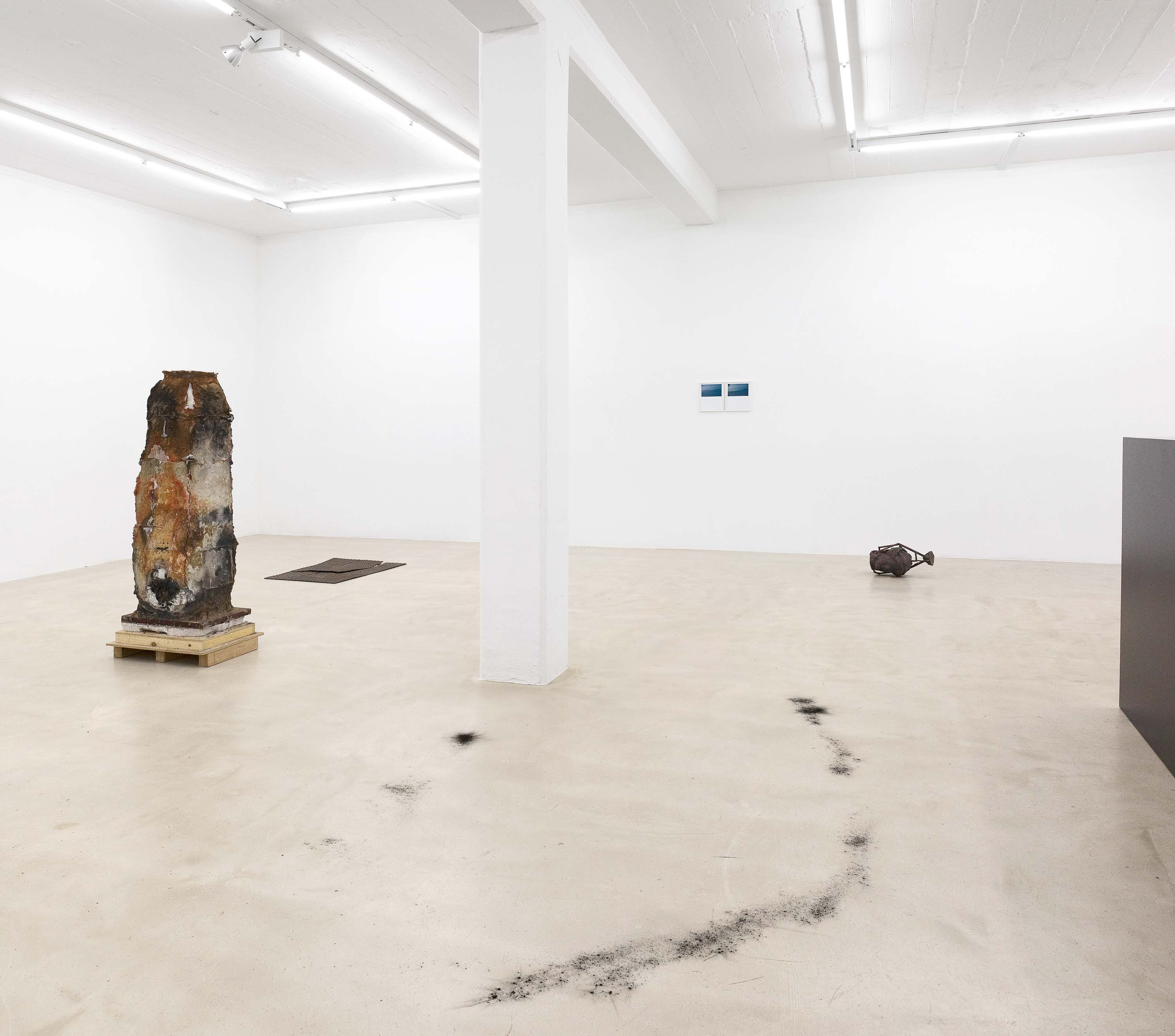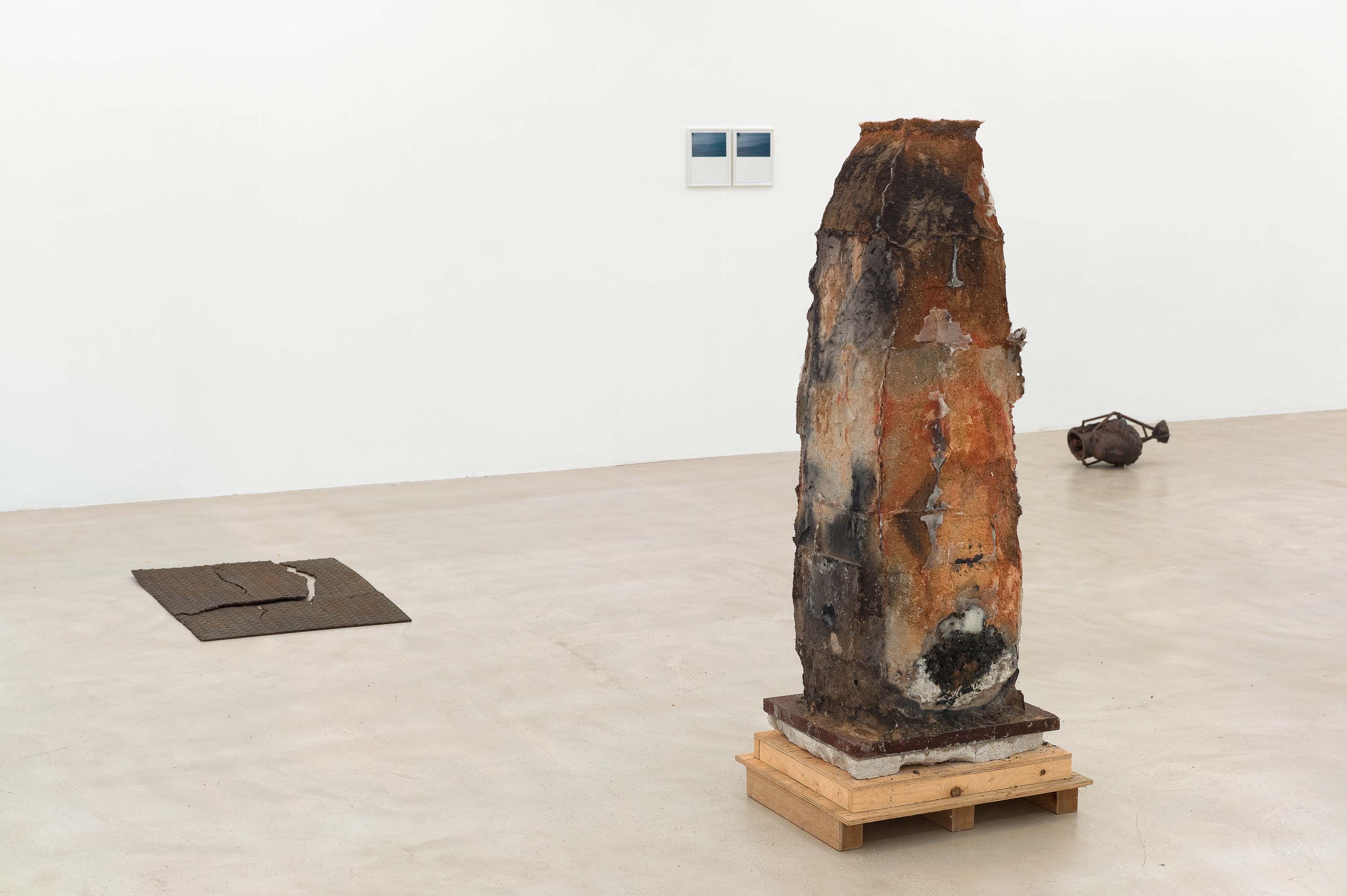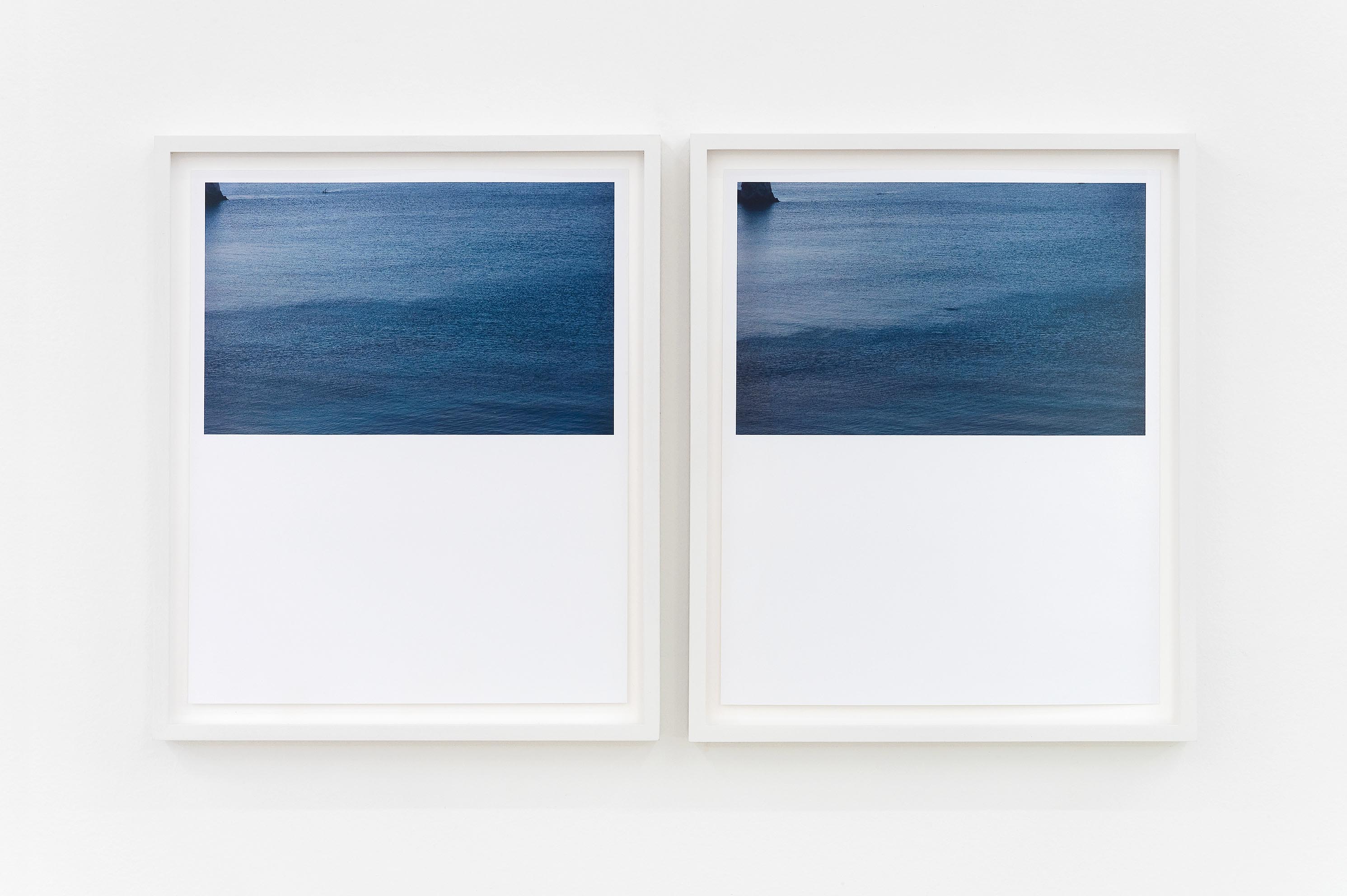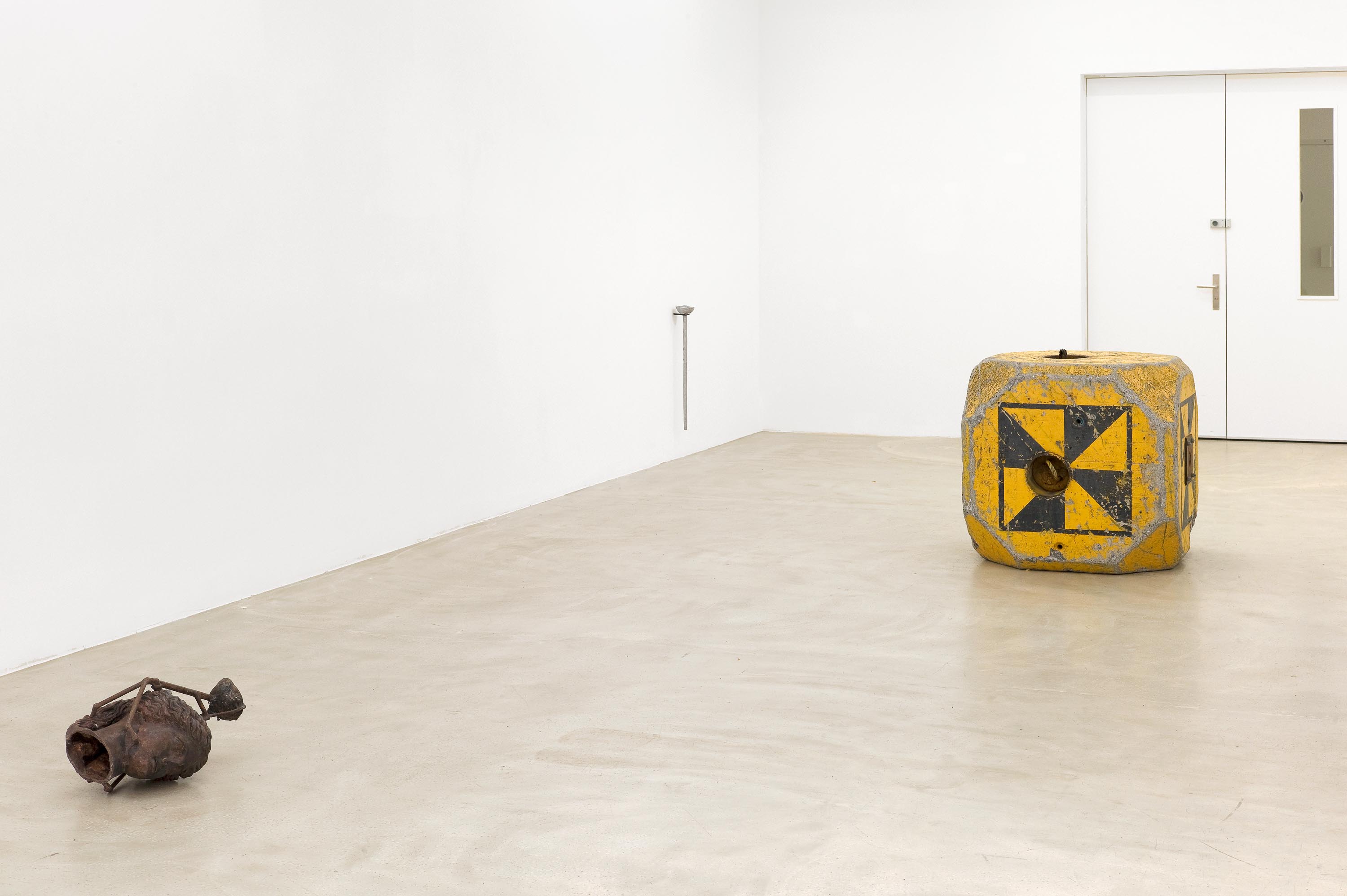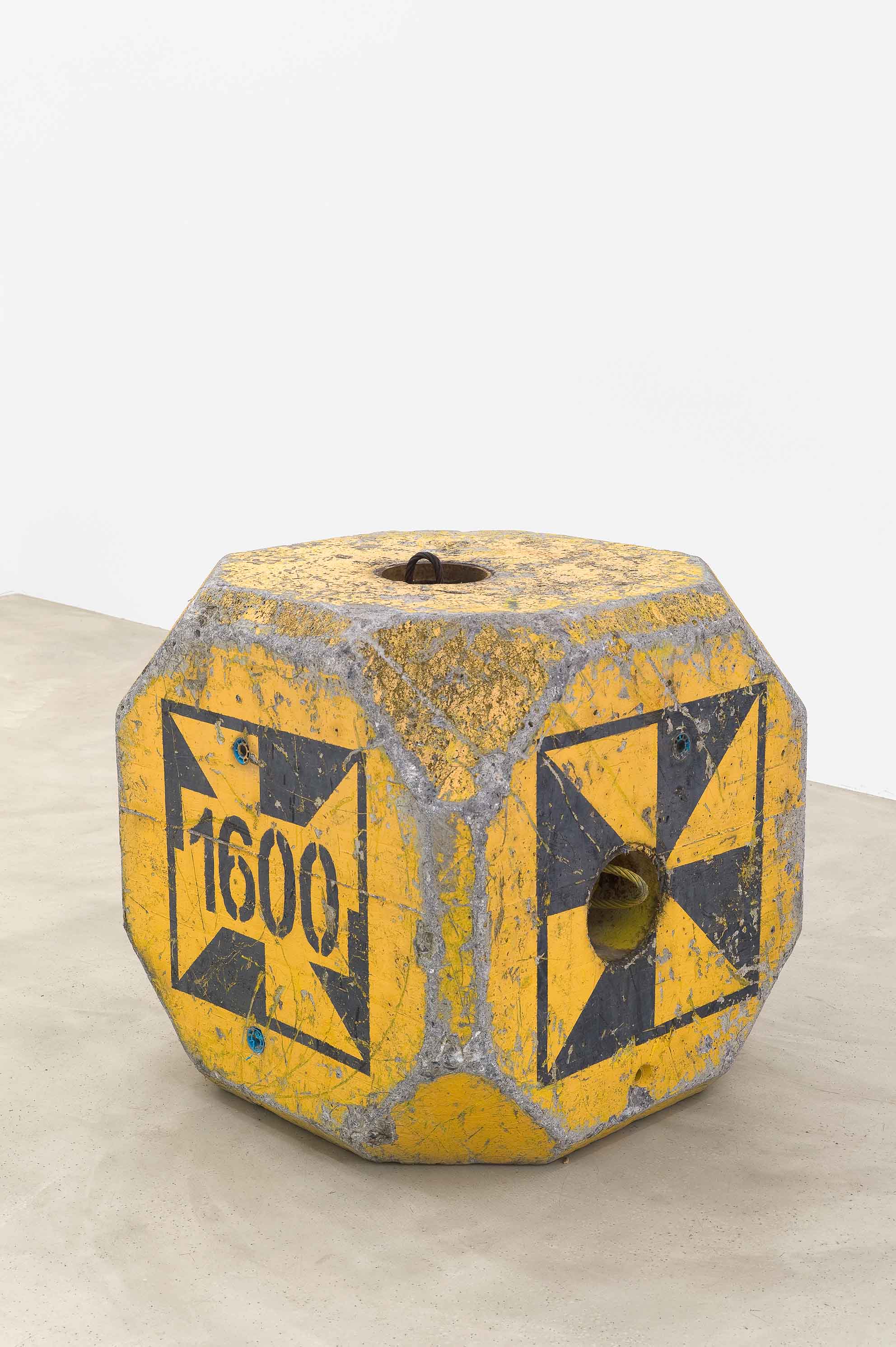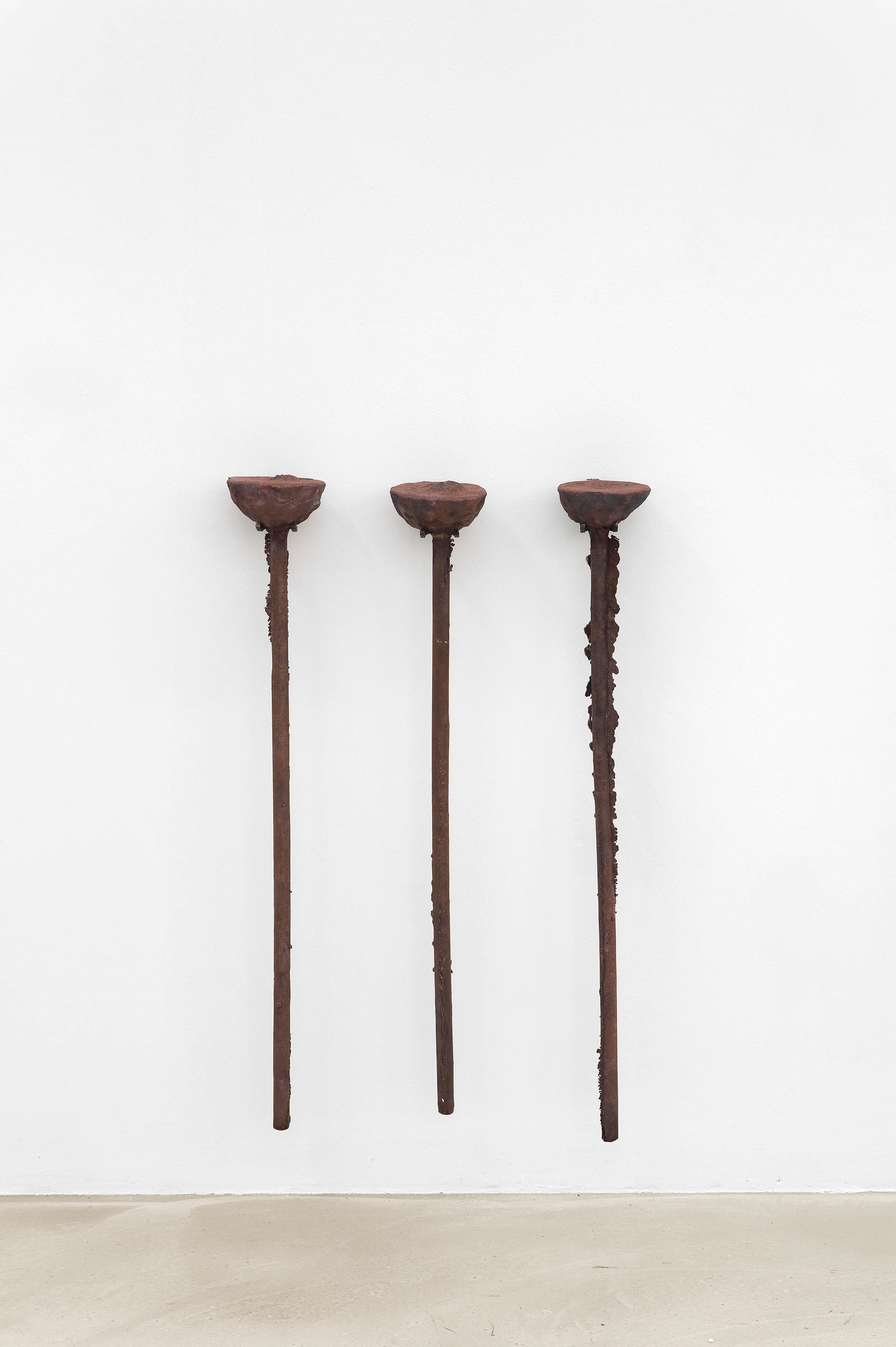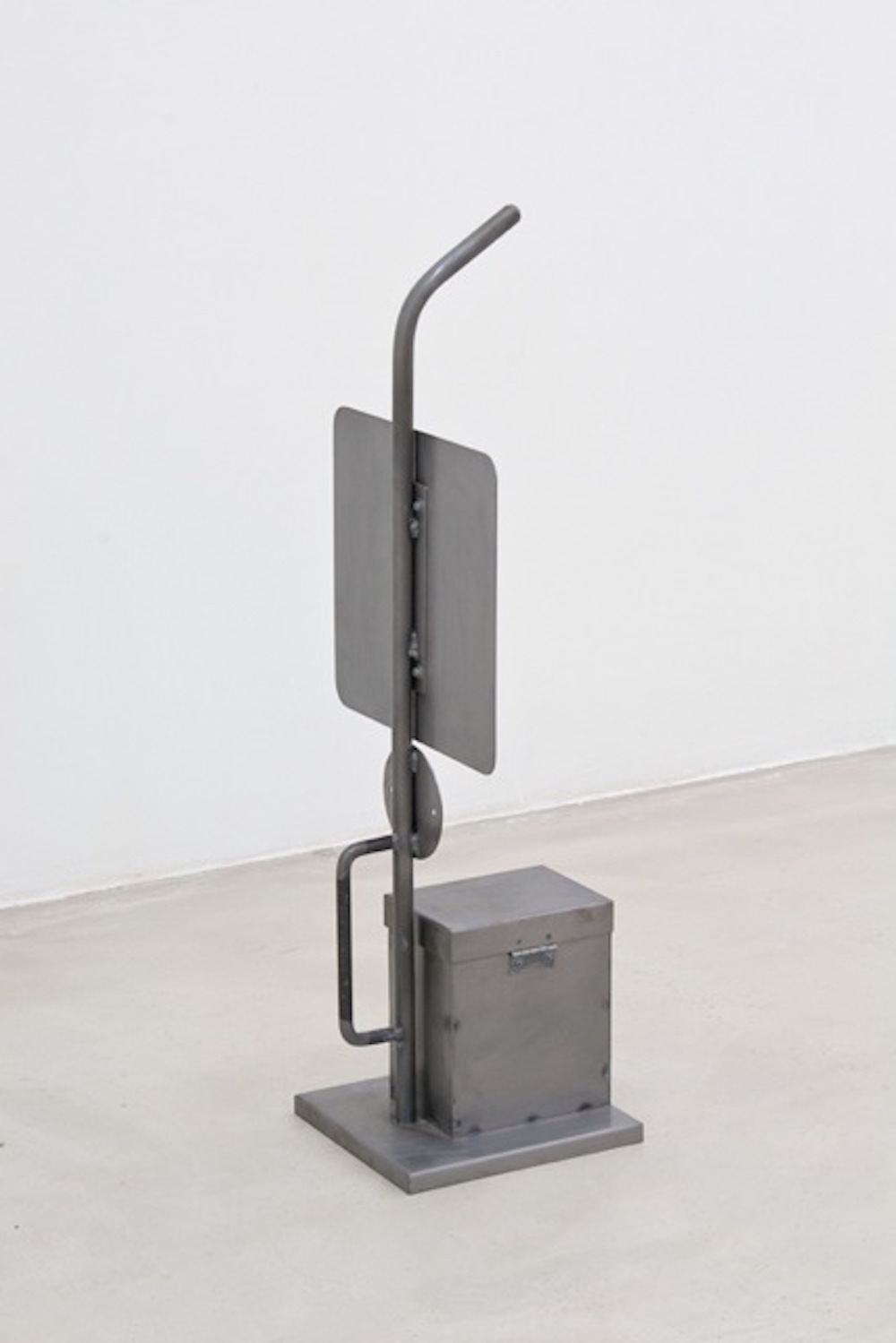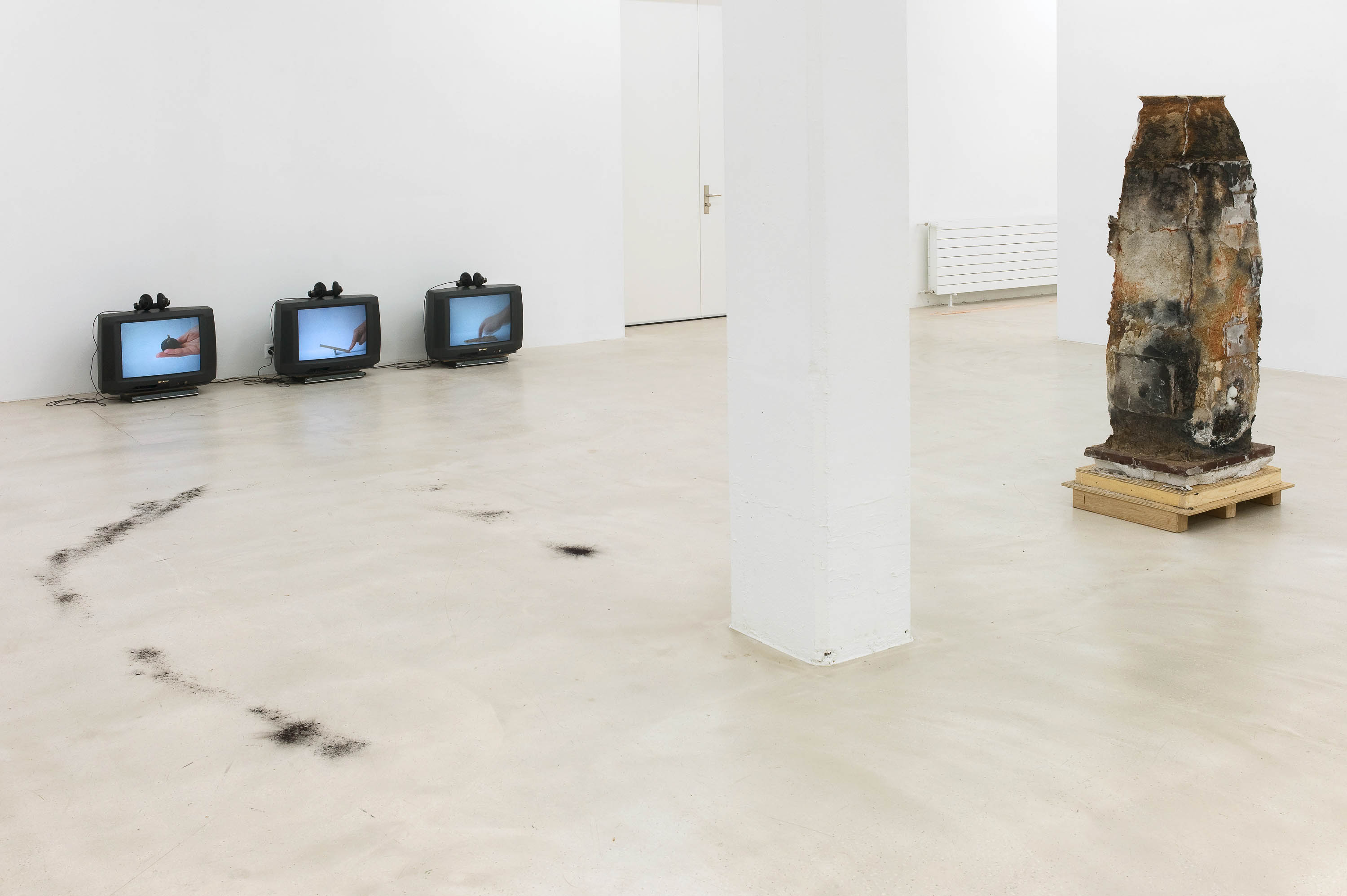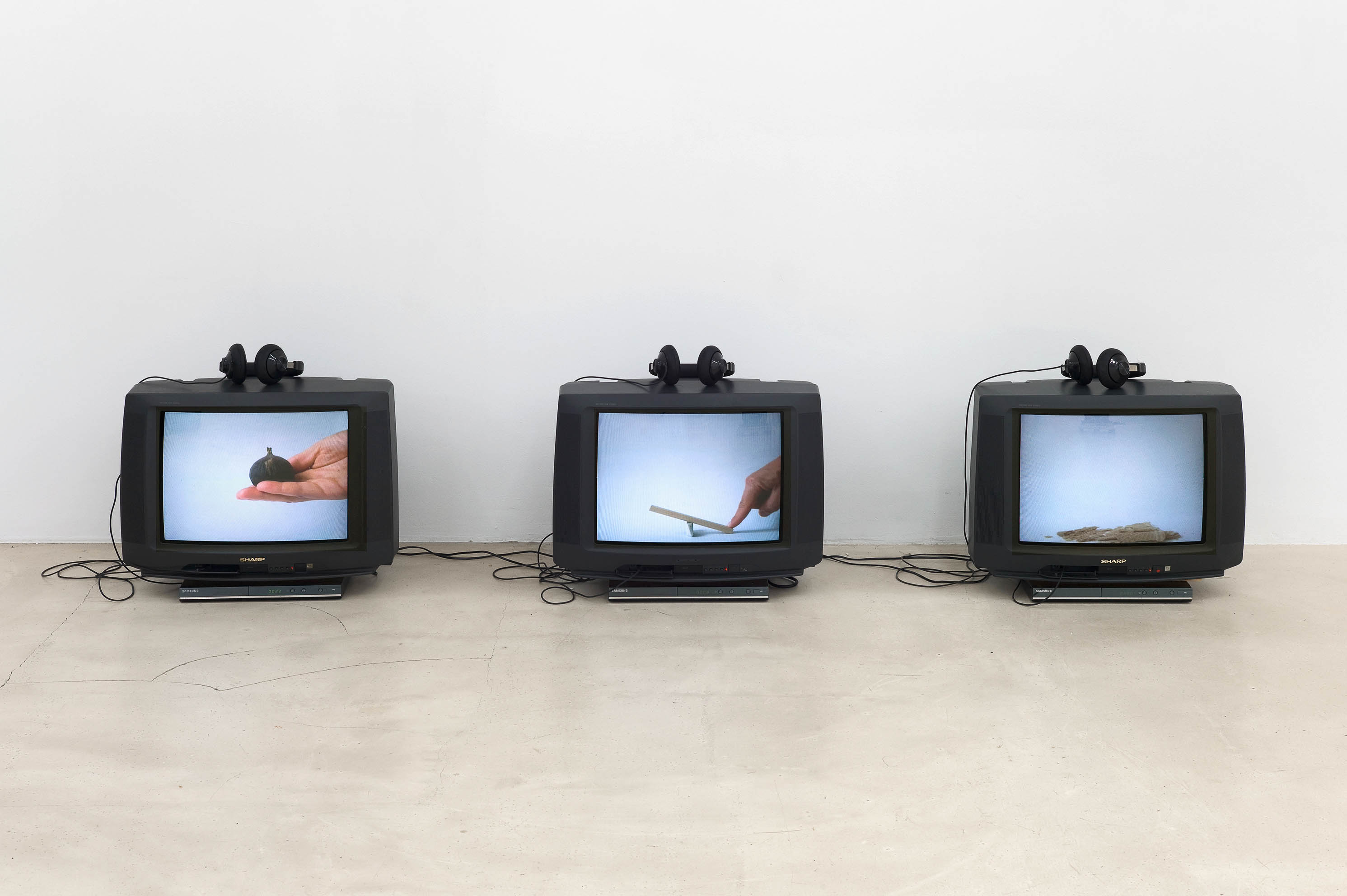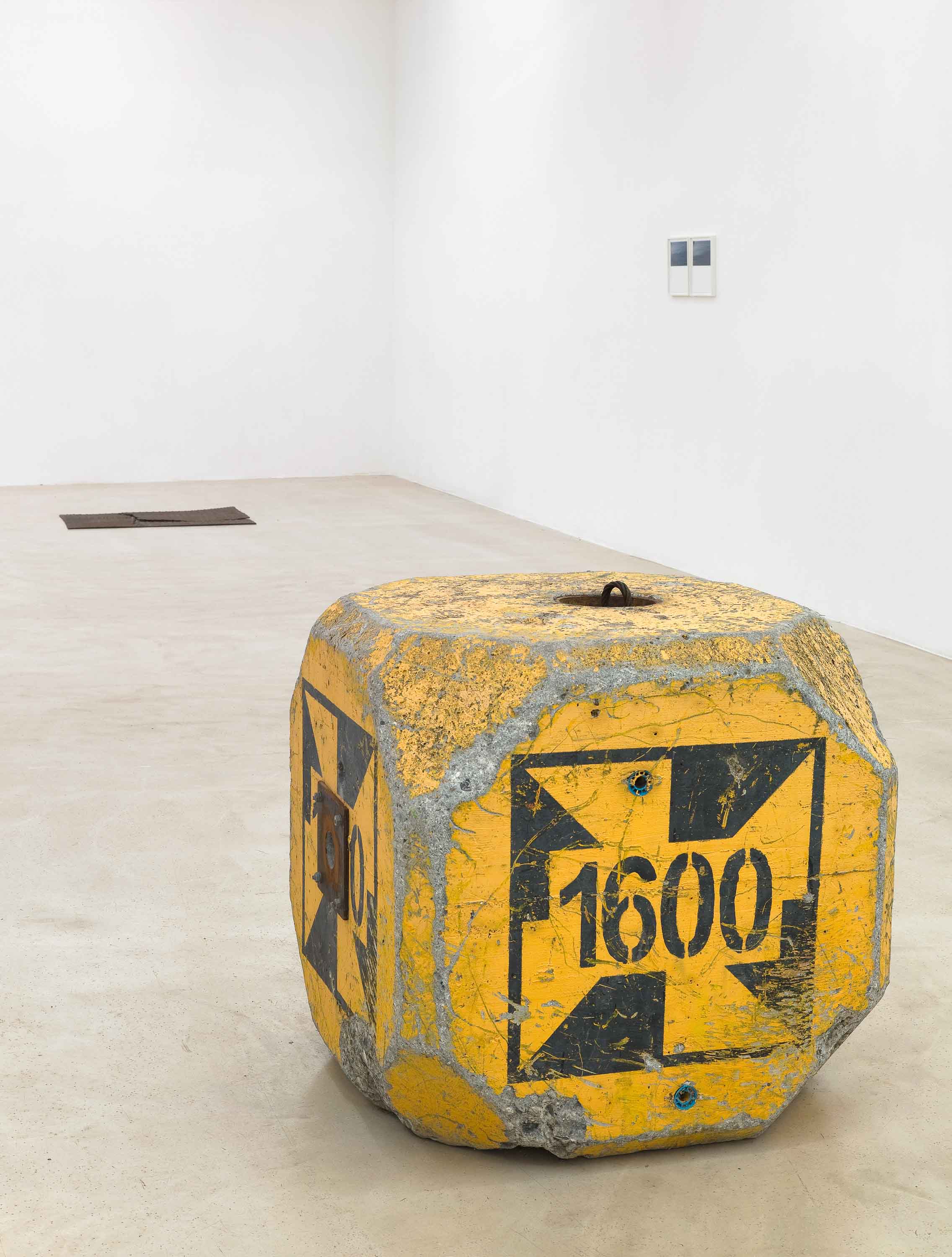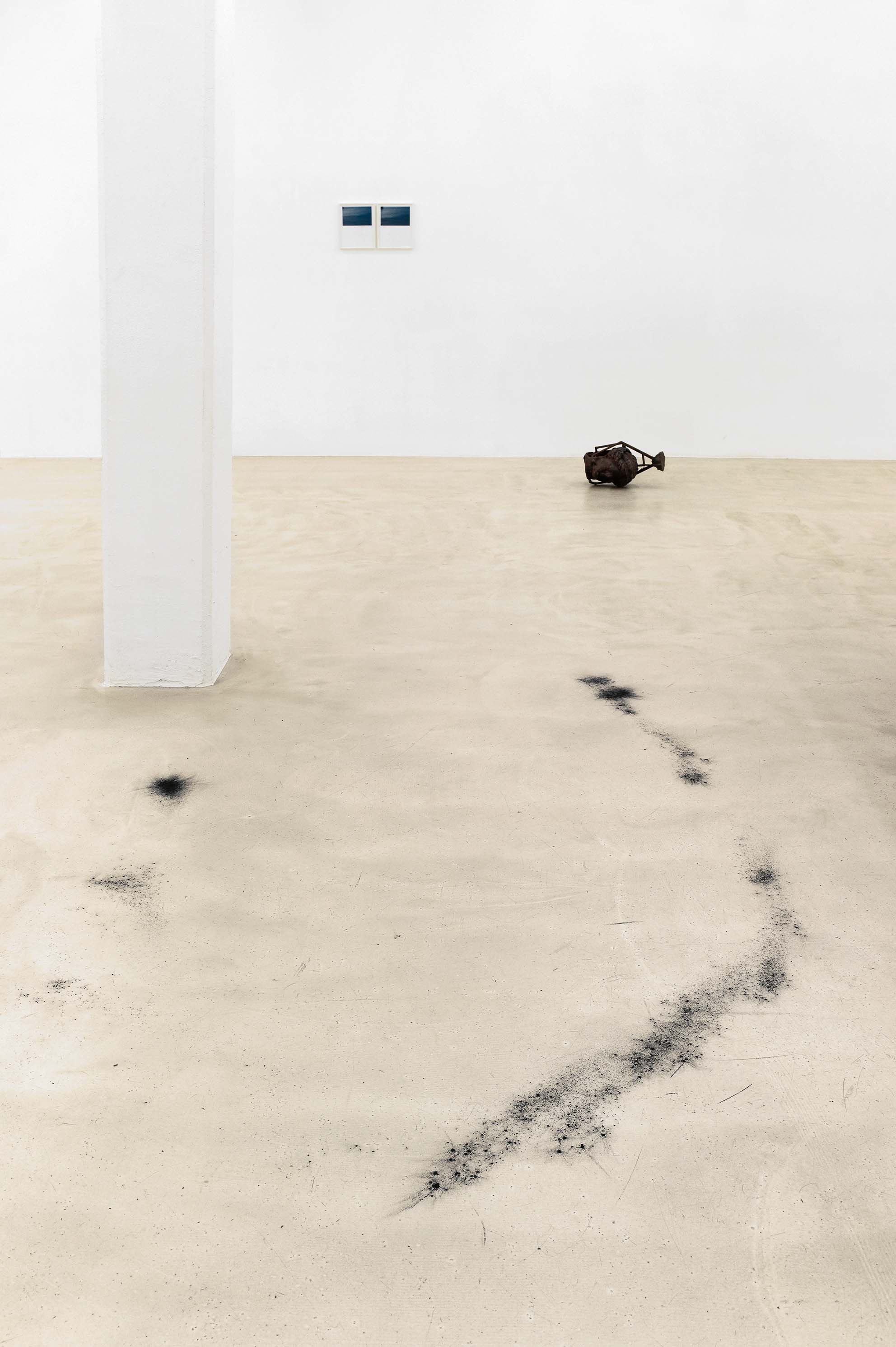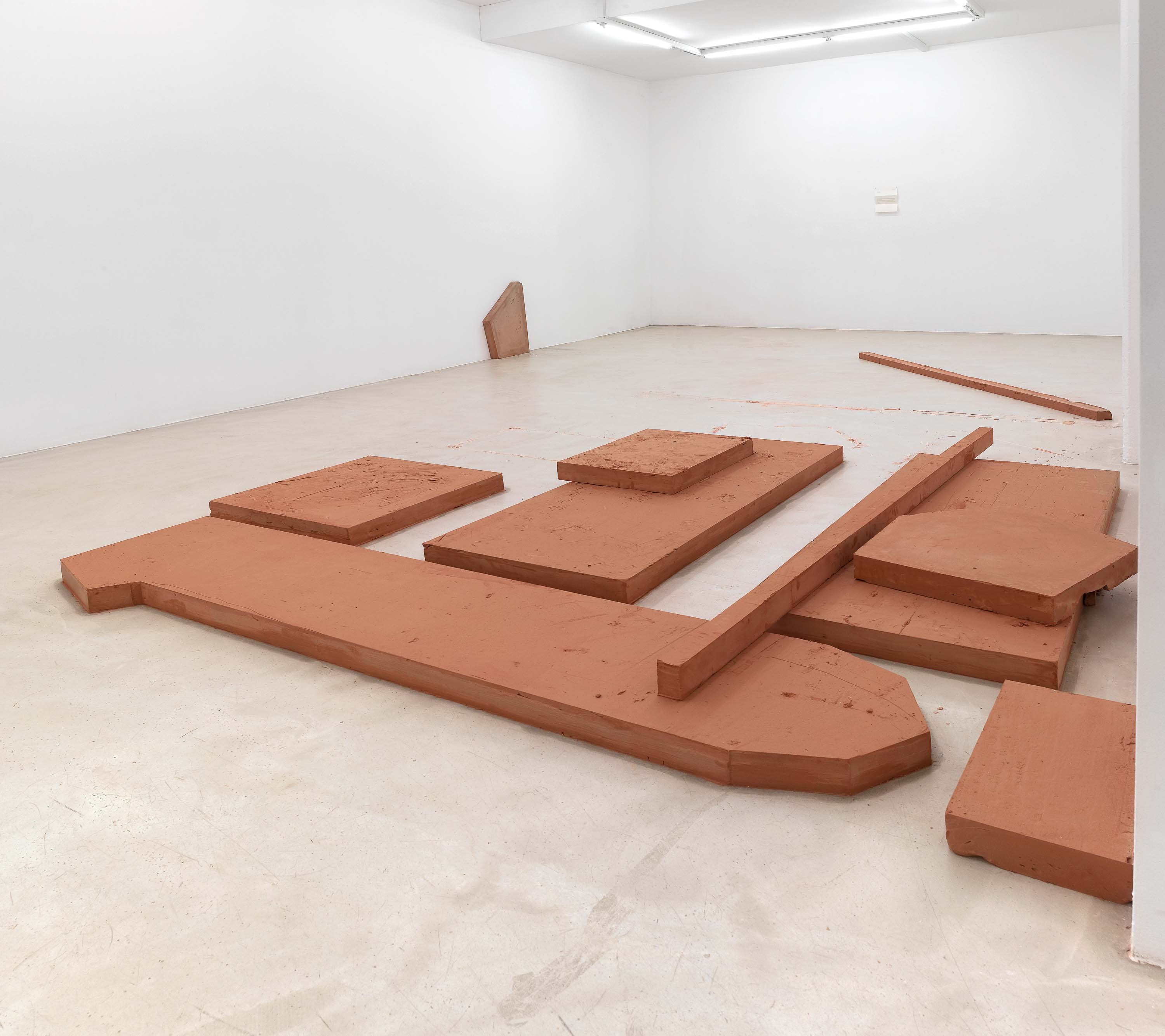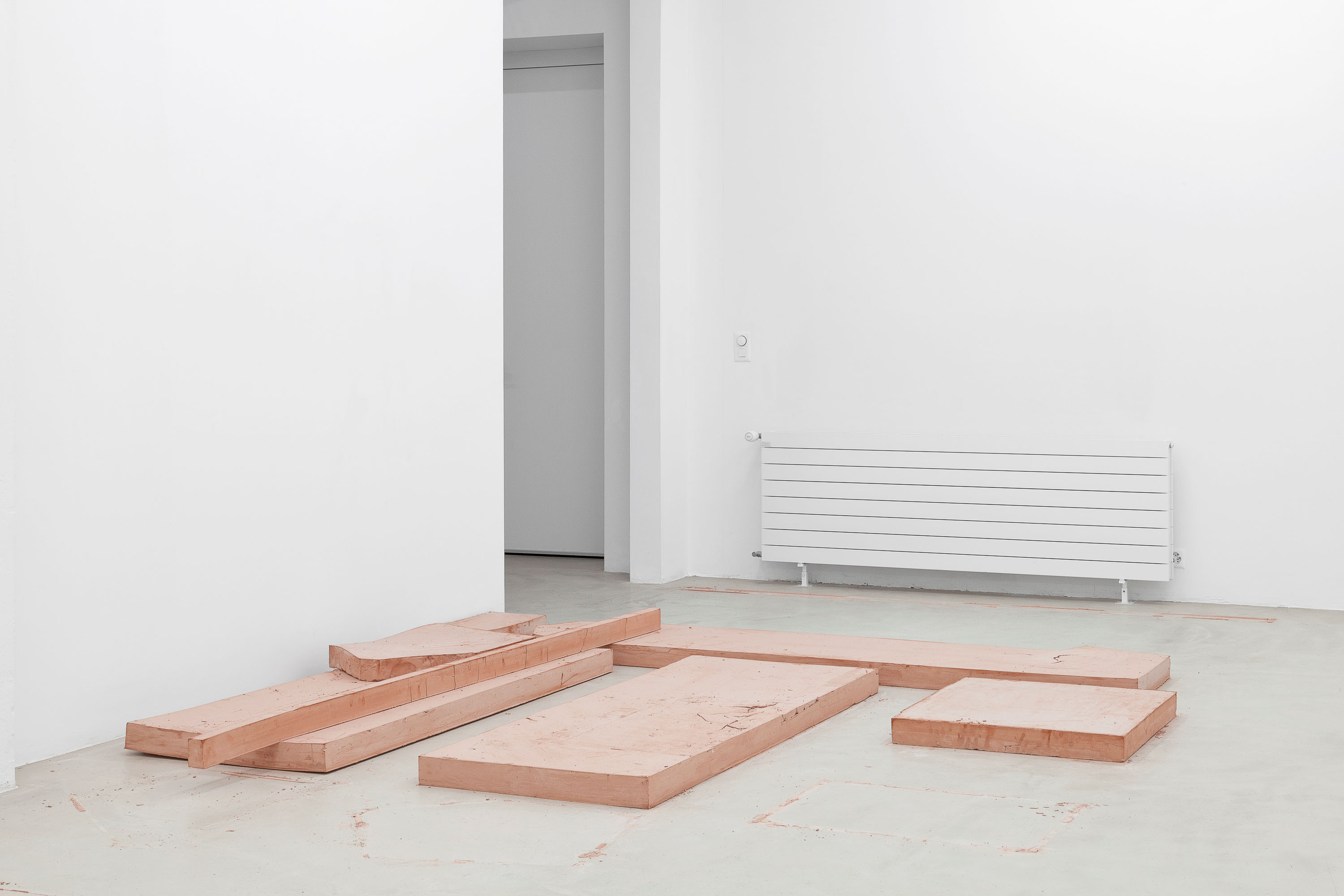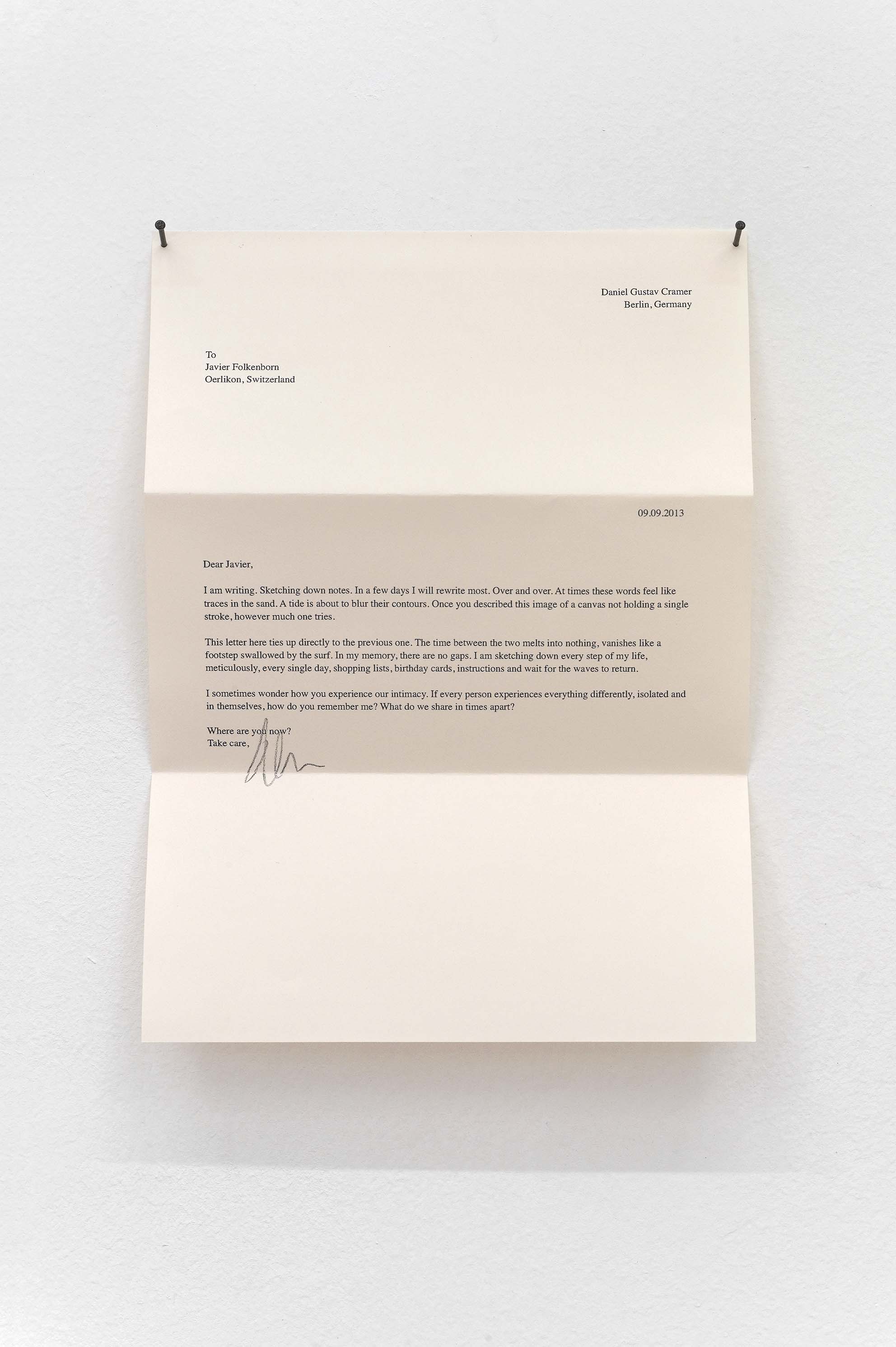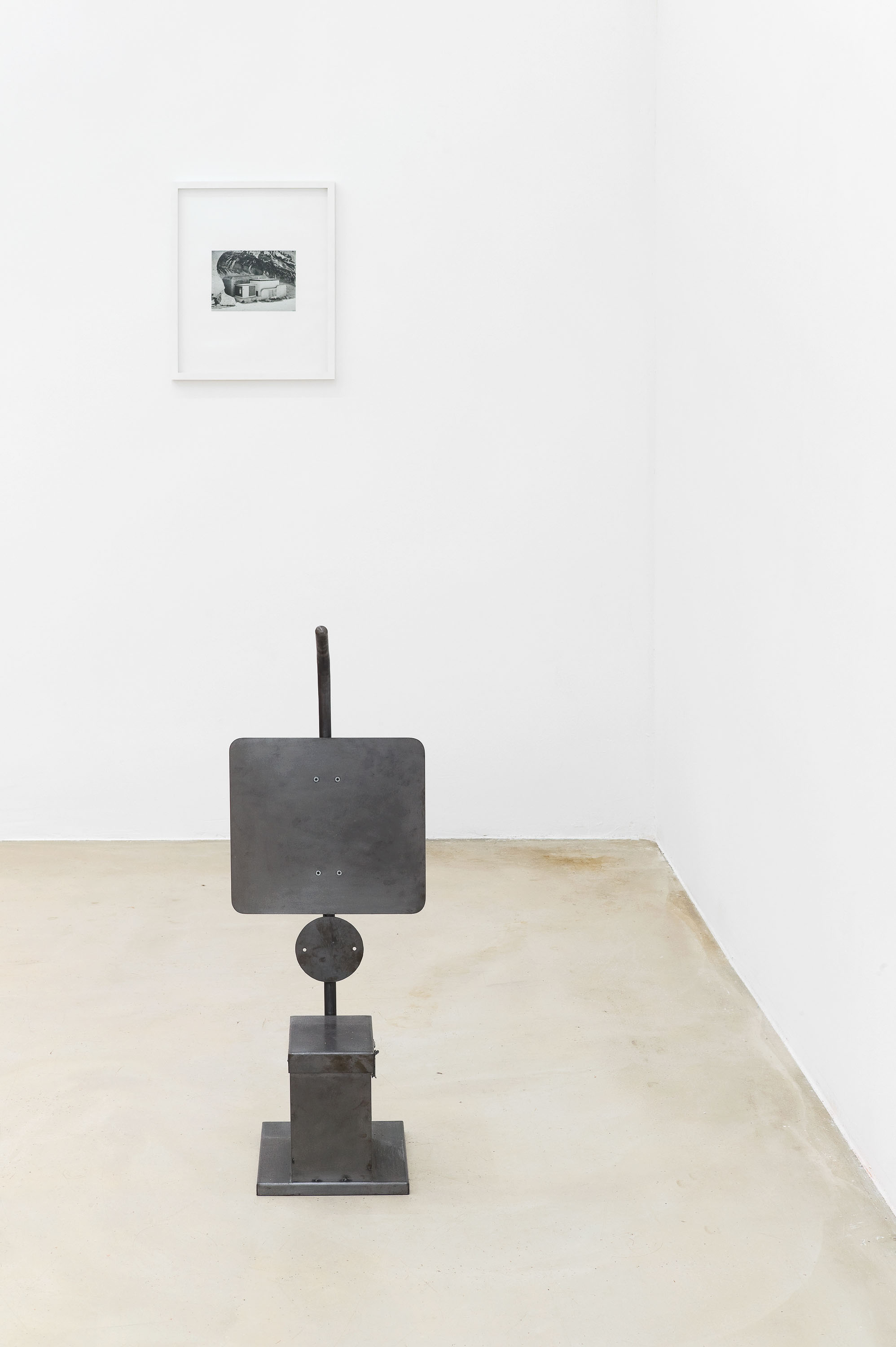- Dates7 March 2014 - 26 April 2014
- Artists
Im Jahr 1736 bewies Pierre Louis Moreau de Maupertuis (1698-1759) mit seiner erfolgreichen Meridianmessung in Lappland die noch umstrittene Abplattung der Erde an den Polen. Der französische Gelehrte und Präsident der Berliner Akademie der Wissenschaften erhielt daraufhin den Ehrennahmen „Der große Abplatter“. Ein zeitgenössischer Kupferstich zeigt seine Beweisführung als die Erde aktiv verformende Handlung, wodurch Erkenntnisakt und Schöpfungsakt einander gleichgesetzt werden. Unter dieser Ikone vereint die Ausstellung die Arbeiten von 6 Künstlern in einem assoziativ verbundenen Feld: Von Sprache, die Formen hervorbringt; von Handlungen, die Formen verändern; von mehr oder minder „männlichen“ Gesten; von zeitlichen Prozessen, die Formen werden.
Max Leiß
-
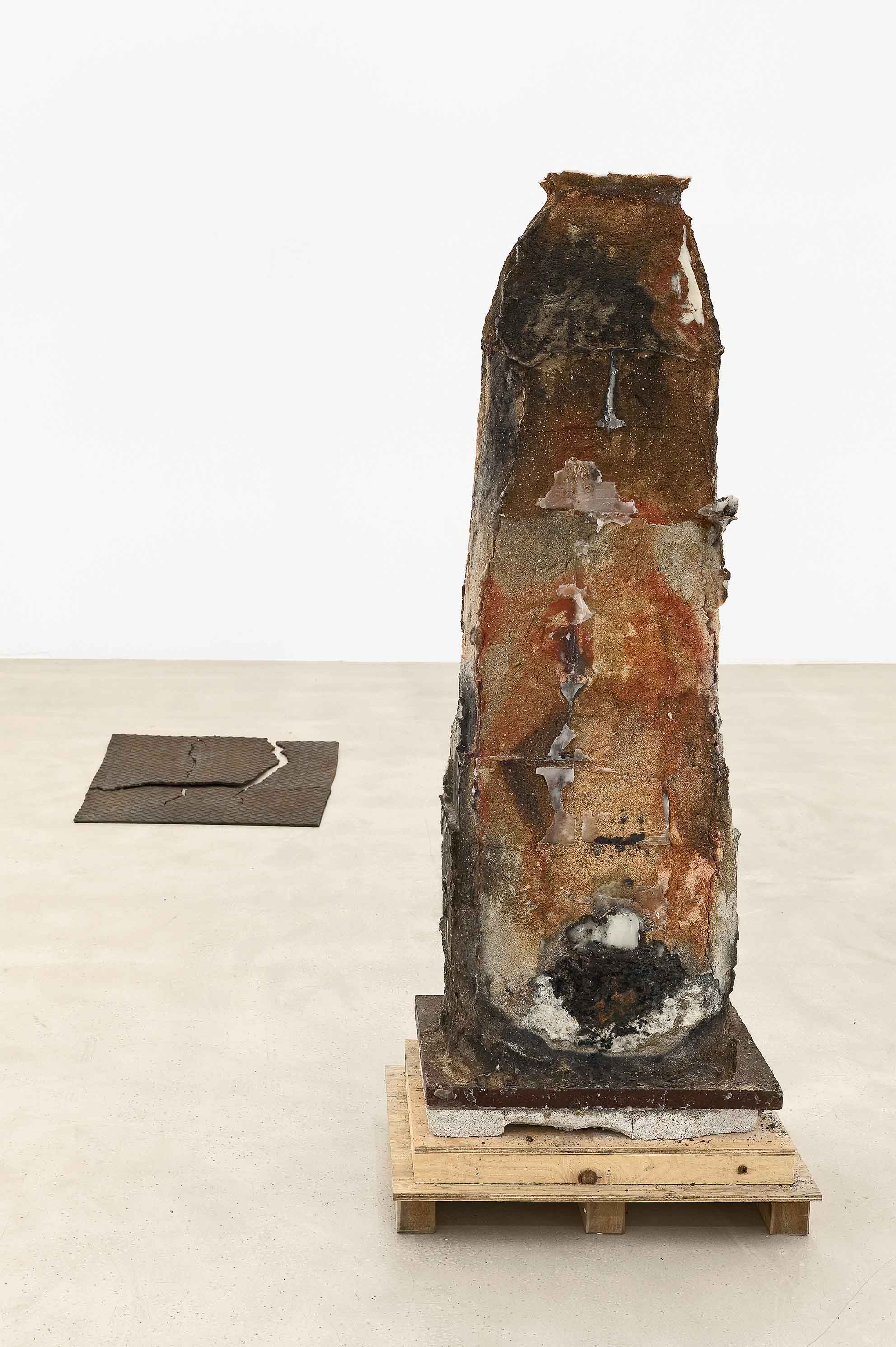
Untitled (Wachsabguss der Brennkammer eines Ofens nach
Jörg Gelbke2012Wachs, Lehm, Kupfer
150 × 50 × 50 cm
Unikat -
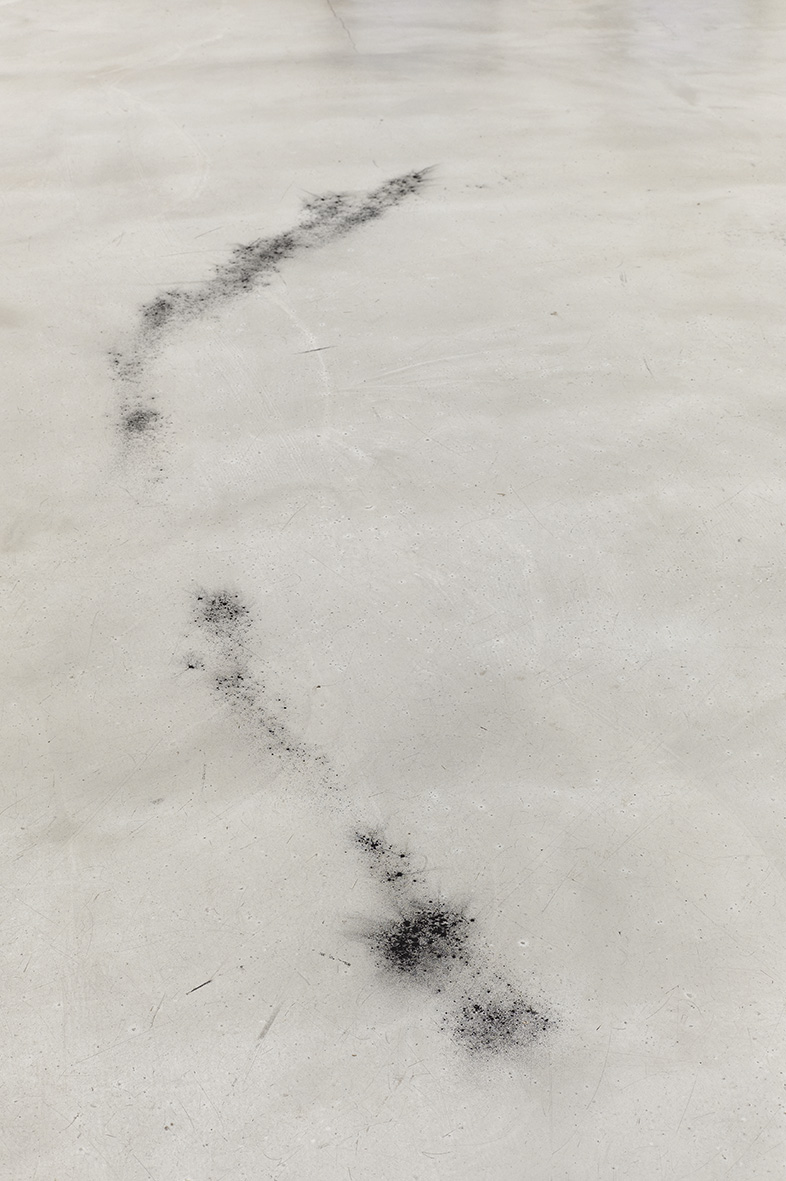
XIII/b
Daniel Gustav Cramer2014Eisenerz (iron dust) auf Boden zerstreut
Variable Dimensionen -
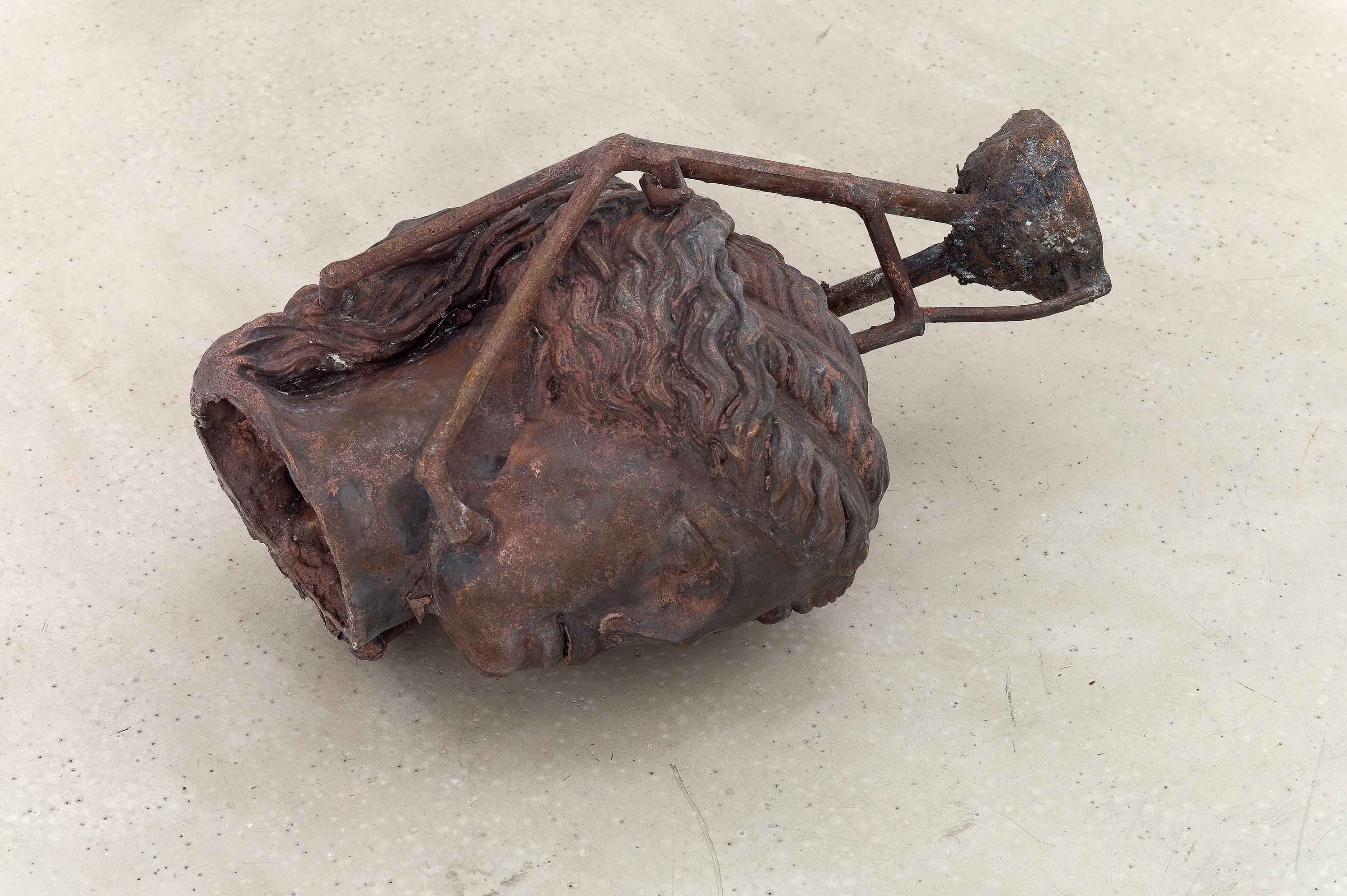
my breath cast into an old form (Kopf einer Frau aus Neapel)
Johannes Wald2014Bronze, Unikat
58 × 37 × 37 cm
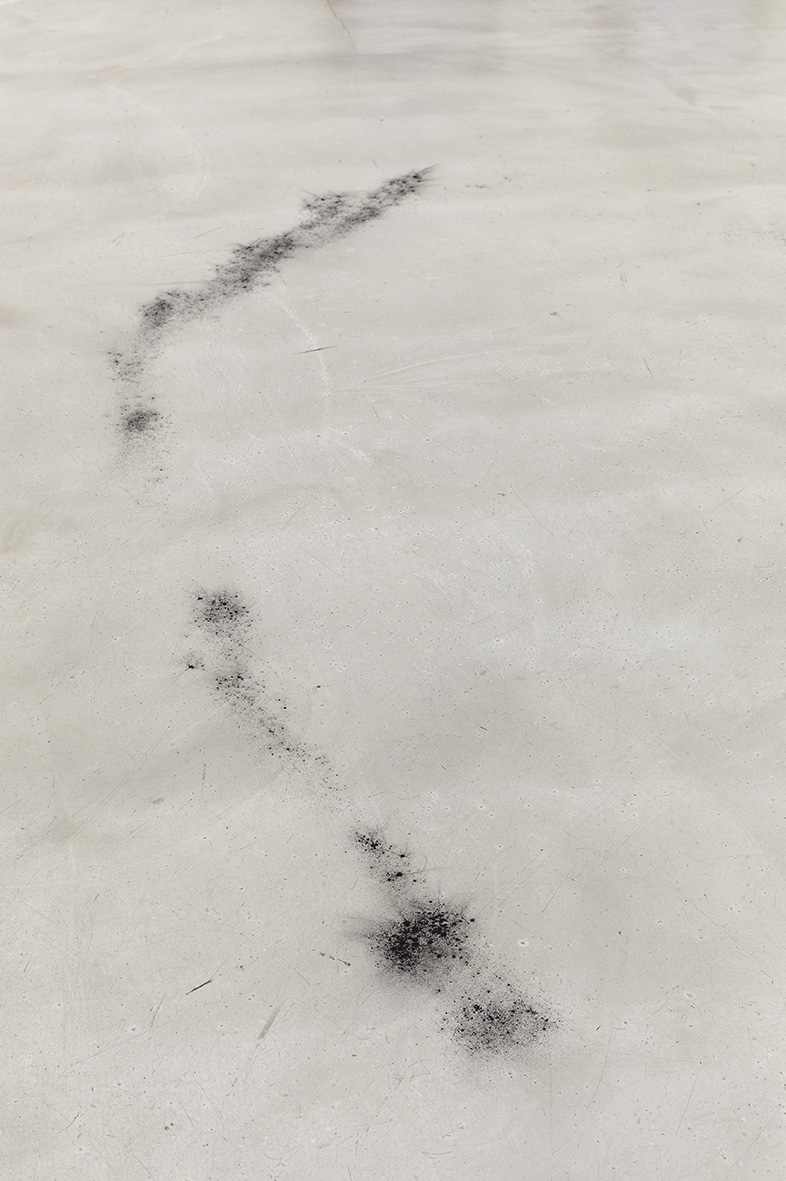
Daniel Gustav Cramer
Daniel Gustav Cramerʼs (*1975) exhibitions often consist of an installation of individual elements that together unfold as one single body.
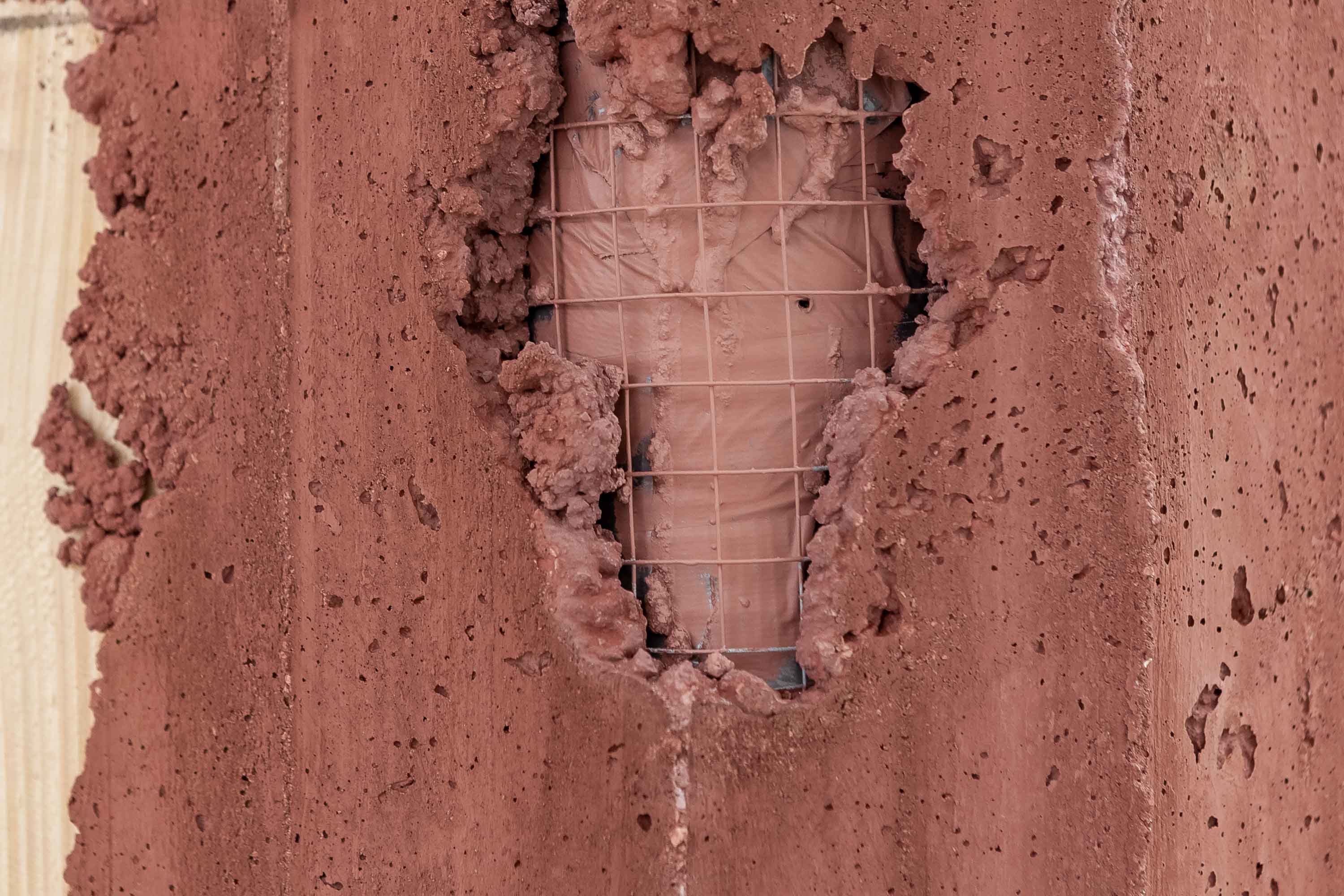
Karsten Födinger

Thomas Geiger
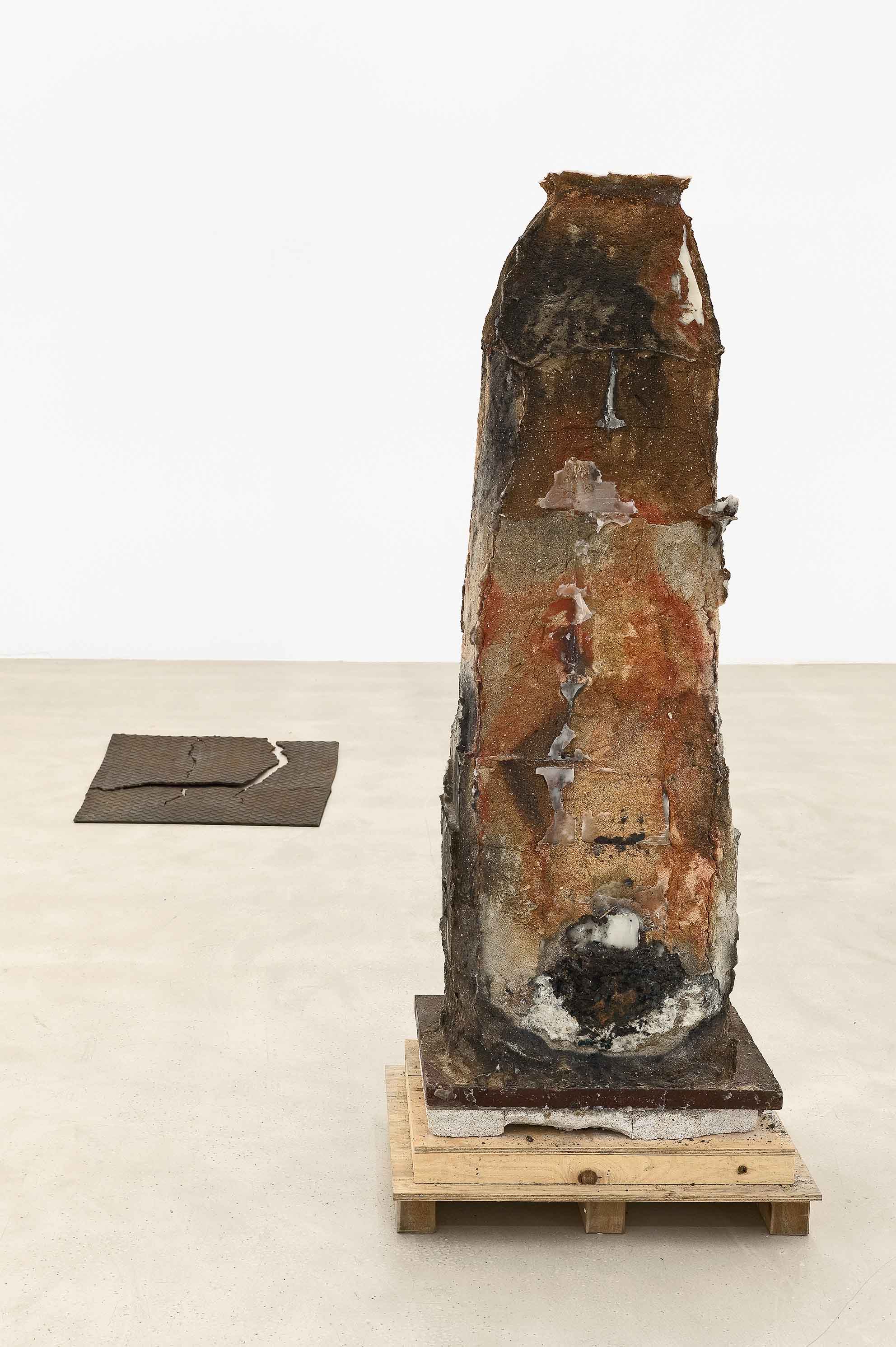
Jörg Gelbke
Jörg Gelbke (geb. 1964 in Lübeck) studierte and der Akademie der bildenden Künste Karlsruhe bei Harald Klingelhöller.

Max Leiß
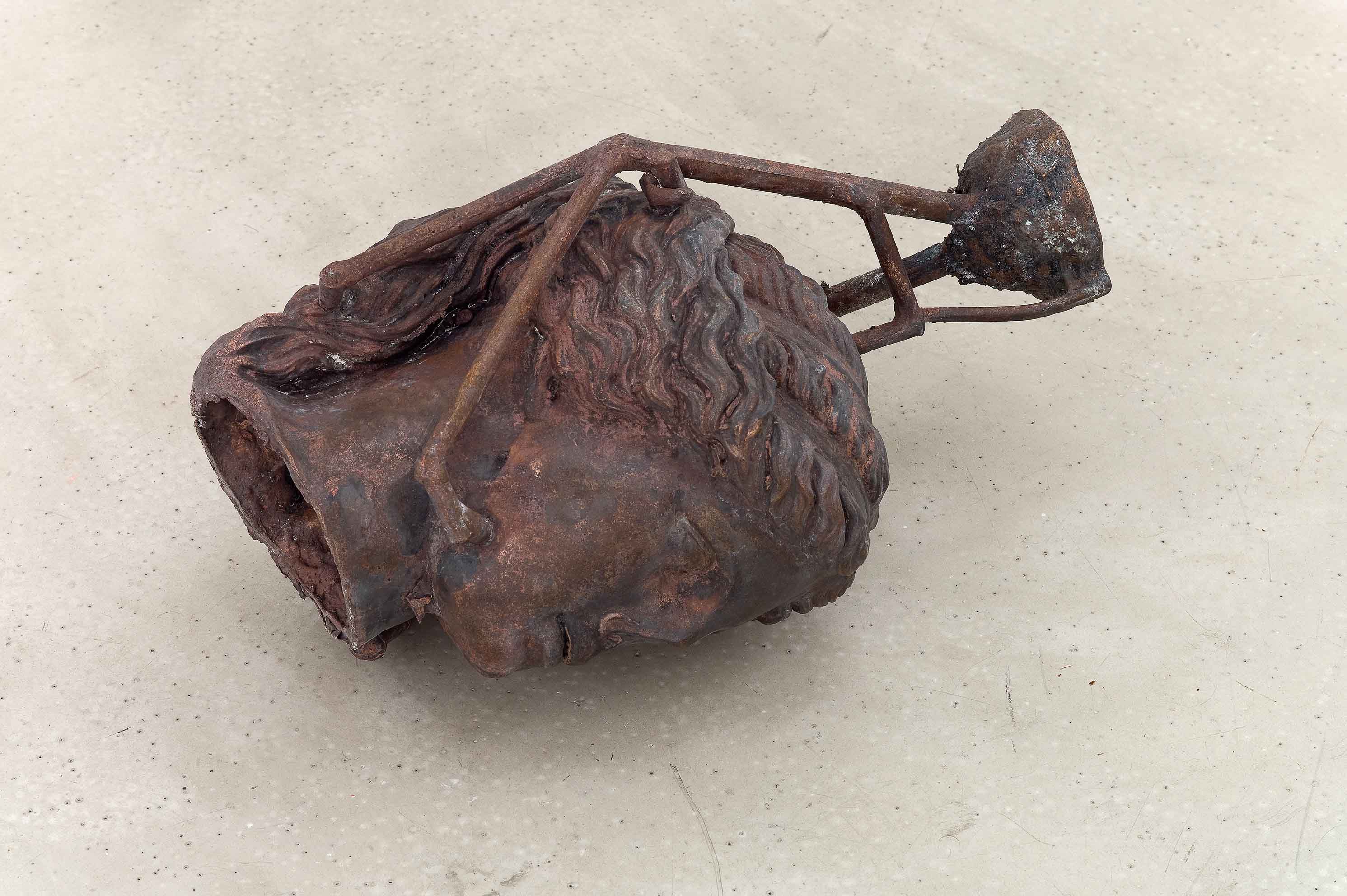
Johannes Wald
Johannes Wald (*1980 in Sindelfingen, Germany, lives and works in Berlin) works in the conceptual tradition where the work of art has lost its relevance as a mere material realization. His focus lies on the process more than the finished thing. He aims for an unfinished stage of intermediate forms and non-recyclable refuse.
